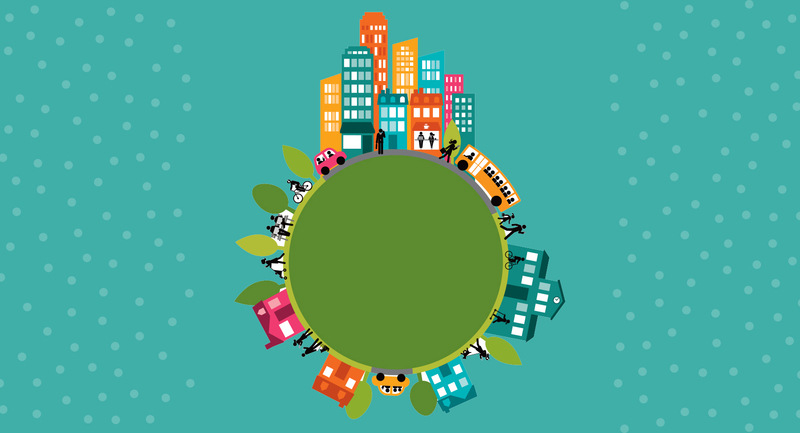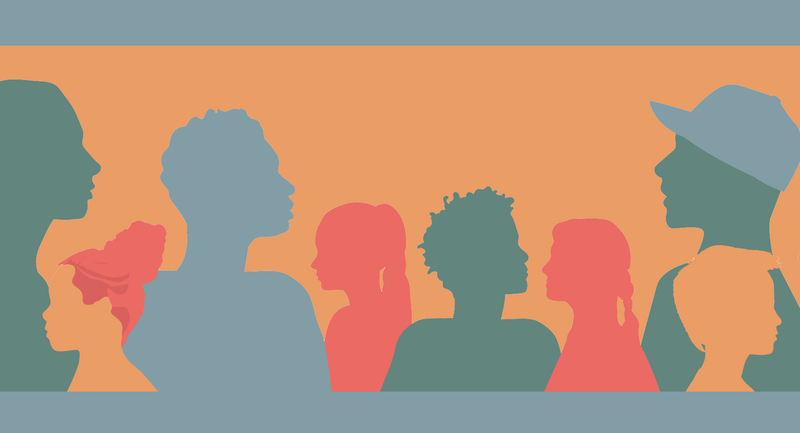Imagine these scenarios: Students run to get to school on time. One boy arrives at 6:45 a.m., even though school doesn't start until 8:10 a.m., because he doesn't want to be late. A parent calls the office saying that her child has an early morning dentist appointment, but really wants to come to school first, and is that OK?
An enrichment program known as Rise and Shine is behind these anecdotes. The program focuses on providing enjoyable activities that 3rd, 4th, and 5th graders at East End Community School in Portland, Maine, experience first thing every day. Rise and Shine's approximately 40-minute classes offer everything from hockey to printmaking to social skills. Our school motto is "dessert first."
Marcia Gendron, until recently the school's principal, remembers a time she had a student in her office who had been out of control on the bus and was still engaging in the drama of the situation. Marcia gave her a choice: "You can continue with your dramatics or pull yourself together and go play kickball with Rise and Shine." The girl responded, "Well, kickball calms me down and helps start my day right." She composed herself and joined some peers in her early morning kickball class.
This anecdote shows one key to why Rise and Shine, and the philosophy it represents, helps students thrive: Every day is a new day and a new learning opportunity. Infractions from yesterday are left behind. Rise and Shine classes go from 8:10 to 8:50 a.m. every morning, right before our formal school day begins. And every day, the halls buzz with kids' excitement as they leave Rise and Shine activities, energized and ready to start their classes.
East End student leaders at work during Rise and Shine. (Photo by Dan Nogar)
"What Would Make Them Motivated?"
These were the kind of scenarios East End's staff and principal envisioned when, in 2011, they looked at turning around this urban, high-poverty, low-performing school through the federally funded School Improvement Grant process. East End Community School is a preK–5 Title I school in Portland, a welcoming refugee and immigrant resettlement community. Fifty percent of our more than 400 students are English language learners; nearly 34 percent are newcomers with no previous English instruction. Twenty-two native languages are represented at the school. Seventy-eight percent of students qualify for free or reduced lunch. East End has a high student transiency rate, and about 10 percent of our students are homeless.
East End educators asked themselves, "What would engage students so that they're happy and motivated to come to school?" The answer they hit on was to find a way to put students in a positive mindset at the start of every day by letting kids choose activities they can enjoy and feel successful in, while fostering a school culture of success, caring, and peer interaction.
Rise and Shine is based on the philosophy, promoted by former principal Gendron, that engaging in self-selected challenges builds life-long learners, fuels innovation, and unites educators, parents, and community volunteers around students' needs. This represents a fundamental shift in school reform ideas, from a focus on academic achievement and test scores to a focus on excitement that transfers to students' academic learning. Also important to this approach is the need to start every day with some choice—which motivates fresh thinking and communicates that student voices matter.
As they helped shape Rise and Shine, the East End staff was influenced by the work described in Eric Jensen's Teaching with Poverty in Mind (ASCD, 2009), Paul Tough's work on resiliency, and Robert Marzano's ideas on engaging, challenging curricula. Staff gained additional knowledge by attending the Model Schools Conference and learning about the Rigor, Relevance, and Relationship framework. From this exploration, they generated new ideas about using engaging activities to build confidence for students living in poverty.
Rise and Shine coordinators Dan Nogar and Marjorie Queen fist bump success. (Photo by Dan Nogar)
Unique Course Offerings
Rise and Shine classes are small (6 to 16 students rather than the 25 commonly found in East End's academic classes), allowing for close adult mentoring. East End's 3rd, 4th, and 5th graders self-select these morning classes based on their interests and passions. Students have the choice of more than 75 activities organized into five strands (fine and performing arts, health and wellness, STEM, literacy, and service). Each activity is 35–40 minutes long and runs for a 12- or 13-week session. Kids sign up for a different activity each day of the week, ideally ending up with a balance across the five strands. Through the process, students learn how to make choices, take personal responsibility, and follow a schedule.
Before students sign up for each new round of classes, two coordinators give a 30-minute presentation of "coming attractions" available the following trimester. The presentation includes visuals to support all students, including those with limited English vocabulary—who may, for example, recognize a chess board but not what it's called in English. Students complete a choice sheet independently, in small groups, or one-on-one, with program coordinators advising as needed. Students often select classes based on who's teaching them. These activities create opportunities to connect with another caring, charismatic adult.
East End develops classes in a variety of ways. Two Rise and Shine program coordinators, who receive partial release time from teacher duties, maintain relationships with nearly everyone in the school and are constantly looking for new course ideas. A staff member may have a hobby or interest that becomes a Rise and Shine offering. Other classes come about through partnerships with community groups. Teachers also build options based on students' interests—making the philosophy of student voice a reality.
Here's a small sampling of classes and activities offered:
- A weekly singing group, "Glee," which includes about 60 singers.
- Full-court floor hockey, good for students who need physical exertion before settling down for the school day.
- A cooking program, "Nutrition for Learning" (run in partnership with the Supplemental Nutrition Assistance Program).
- "Take it Apart," in which kids use screwdrivers and wrenches to disassemble old computers, typewriters, and DVD players to see how their insides work.
Bringing the Outside In
Building community—between students and teachers, with families, and with broader community members—is a central component of East End's school improvement philosophy, and is particularly key for a school with so many different native languages and transient students. Rise and Shine is part of that community-building process. It provides a way to bring the community into the school and get students out into the community. This model has grown to include more than 15 community partners, including the Portland Fire Department, the Animal Refuge League, and the St. Lawrence Arts Center.
In the past, members of the community only interacted with East End students through large-group presentations, such as assemblies. Community adults now build relationships with students who have chosen to attend their classes. Partners can develop a "curriculum" that inspires students and that doesn't have to align with learning standards (but often does) or lead to assessment and grades. For example, the local fire department developed a junior fire-prevention program that included a smoke room experience, safety training, and tours of the fire trucks and station.
Just as both school staff and outside content providers innovate in developing Rise and Shine classes, students have begun to innovate. Some create new Rise and Shine activities, with adult sponsors helping them flesh out their ideas. For example, some students wanted to work with younger students, so under the strand for service, they created a teacher's helper program in the kindergarten and 1st grade classrooms. Some 4th and 5th graders even piloted their own mini Rise and Shine programs for 1st graders.
Building Skills
Another core goal of reform efforts at the school has been building opportunities for students to be creative, critical thinkers as they engage in real-world activities—even if they don't yet speak English. East End leaders believe students should feel competent and energized at the start of the school day because feeling positive and sensing caring relationships creates opportunities for academic success. A goal of Rise and Shine is to foster a "champion" mindset in every student: "I'm going to be really good at something. If I'm not yet, I will be."
This includes striving to be good at academic and social-emotional skills. One teacher explained how Rise and Shine allows her to address needs that arise in her classroom. For example, she saw the need for math enrichment and created a math problem-solving group. She also saw social issues arising between girls and developed a reading group in which girls read a novel that addresses some of the social challenges they were experiencing. This allowed the girls to talk about issues through the book characters and learn strategies for interacting harmoniously. School leaders and teachers found that students' positive energy from Rise and Shine often extended into their academic learning time, as teachers reported observing students' energy and focus level in the classroom. The school now schedules math, a challenging academic area, after Rise and Shine. Students say they like math more. Test scores in math are improving.
Reflecting and Showcasing
At the end of each session, all participants write a reflection that includes what they learned and how they can apply what they learned to their academic subjects. Here's what some of these 3rd through 5th graders have said:
"Maker Space is my favorite … because it makes me think. I am most proud of learning how to use the 3–D printer.""I like starting my day with jump rope, soccer drills, and basketball.""Poetry is my favorite Rise and Shine. … I can write about something that means a lot to me or about things going on in the world."
Rise and Shiners also share their learning publicly in an assembly or other format. Culminating performances have included Zumba demonstrations, a projection of Minecraft worlds, and "Glee" concerts. Students gain a sense of confidence and stage presence; they understand how to demonstrate their learning to a broader audience. Performances also create a sense of excitement among the younger students, who anticipate becoming 3rd graders and participating in the joyful learning evident in Rise and Shine.
Spreading Effects
Over the last four years, using student surveys, we've documented a growing sense of community at East End. In the most recent (2016–2017 school year) Student Voice survey of 192 students who took part in Rise and Shine, 92 percent reported having a positive connection with a least one adult in the school. Eighty-seven percent said they feel they are part of the school, and 85 percent reported seeing peers encourage and support one another. School leaders have seen signs of greater empowerment of student voice and choice since launching this program—and a greater "can do" attitude.
Academic success has also followed. In 2011, East End was in the bottom five percent of schools in Maine for academic achievement on standardized tests. Five years after beginning Rise and Shine, the school's test scores in math and reading on the state accountability achievement test have shown significant growth. Test scores for the 2016–2017 school year indicated that the school was at the state average of 38 percent of students proficient in mathematics and, with 45 percent of students proficient in ELA, close to the state average of 52 percent. We believe the program is helping close the opportunity gap, which is greater than the achievement gap in high-poverty schools.
With whole-school improvement initiatives, it's difficult to isolate any single factor that leads to changes. However, our laser focus on building positive relationships and strong academic programming has certainly had a significant impact.
The inspiring effect of Rise and Shine extends to the teachers as well. Teachers know that as key architects of Rise and Shine and other school initiatives, their input and ideas are valued at the whole-school level. The philosophy of promoting student voice and choice, instilling confidence, and fostering connections that East End realizes through Rise and Shine isn't just evident each morning; it permeates the entire school day.








